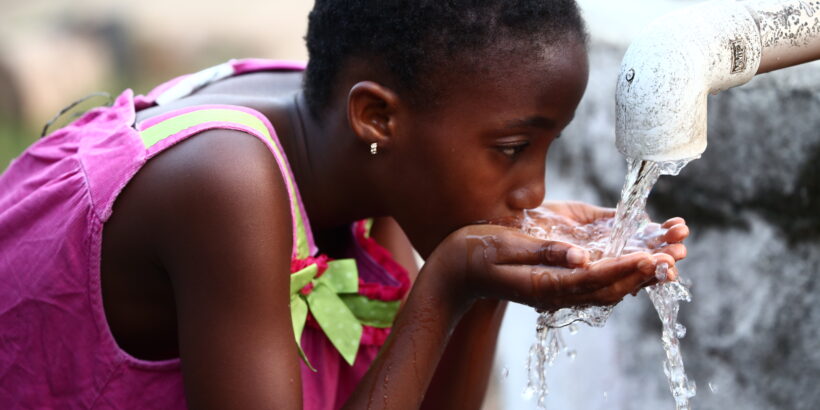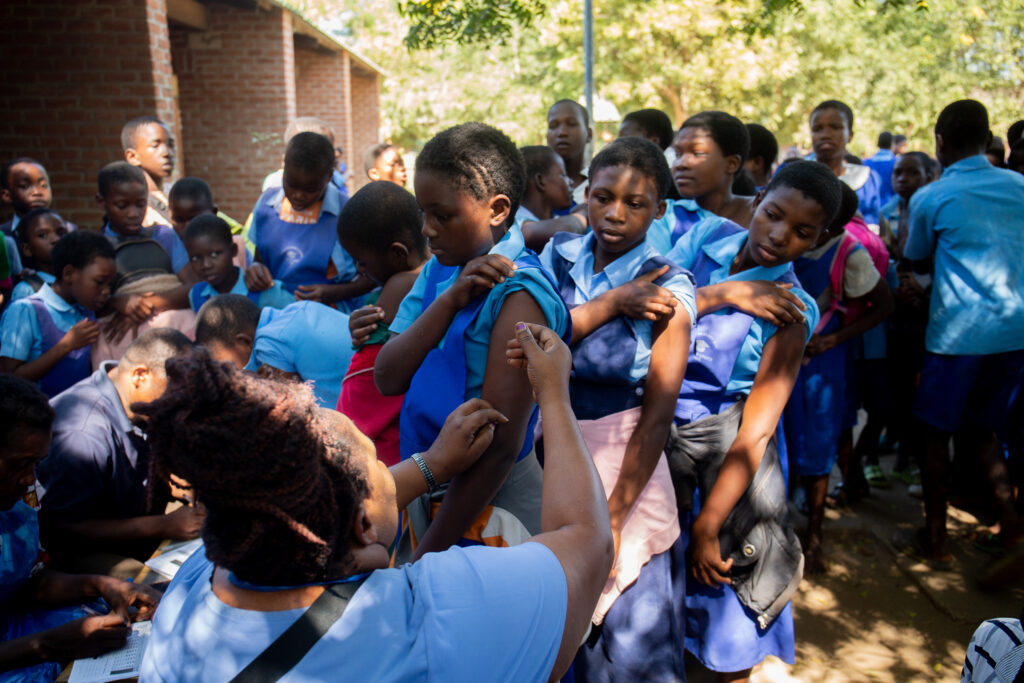There is no one-size-fits-all approach to disease prevention. But when it comes to enteric diseases like typhoid, cholera, Shigella, and others, we have a clear toolbox of proven interventions that can help prevent and respond to disease. Water, sanitation, and hygiene (WASH) interventions and vaccines are two such tools. Together, WASH and vaccines offer protection against disease over both the short term and the long term.
WASH is foundational to disease prevention
Access to safely managed drinking water, sanitation services, and proper hygiene is a backbone of public health, especially to prevent waterborne diseases like cholera and typhoid. These diseases spread via the fecal-oral route when bacteria pass into people’s mouths through contaminated food, water, hands, or objects.
Globally, nearly 2 billion people use sanitation facilities that lack basic water services, and nearly 700 million use facilities with no toilets. Factors like economic insecurity, extreme weather, conflict, and displacement put further strain on WASH systems and widen the gap in access to safe and hygienic facilities.
Solutions such as water treatment or filtration, maintaining toilets and sanitation systems, and education about hand hygiene and food-handling practices can protect against waterborne diseases. Investing in WASH also creates ripple effects in communities, improves reproductive and maternal health outcomes for women, reduces school absenteeism for girls during menstruation, and drives economic growth.
Immunization defends against outbreaks and endemic disease
While improving WASH infrastructure is the ideal long-term solution to quell transmission of waterborne diseases, it takes considerable time and investment. Many of the countries that could benefit the most from improved WASH are also those with fewer resources and competing health priorities. When outbreaks happen, vaccines can provide immediate protection and help curb the spread of disease quickly. When used routinely, vaccines can protect entire populations from endemic diseases, which are those that are regularly occurring in the community.
In the past decade, oral cholera vaccines (OCVs) have dramatically improved the ability to quickly contain cholera outbreaks. OCVs provide safe, immediate protection that lasts two to three years. Cholera cases have surged in recent years—driven by climate-related factors, economic insecurity, conflict, and population displacement—reinforcing the need for greater investment in the global OCV stockpile.
Likewise, in Pakistan and Zimbabwe, typhoid conjugate vaccines (TCVs) have played an important part in outbreak response efforts. TCVs provide strong protection against typhoid for at least four years, and they are safe and effective for children older than 6 months of age. They can also help prevent the spread of drug-resistant typhoid: in Hyderabad, Pakistan, research found TCVs to be 97 percent effective against extensively drug-resistant (XDR) typhoid in an outbreak setting. TCVs are being rolled out in many typhoid-endemic countries to provide long-lasting protection against typhoid for children. To date, more than 75 million children have been reached with TCVs worldwide through introduction campaigns, and nine countries have introduced the vaccine into their routine immunization schedules.
Photo: Students in Malawi receive the typhoid conjugate vaccine (TCV) during the country’s TCV introduction campaign in 2023. Credit: TyVAC/Madalitso Mvula
With both WASH and vaccines, protection goes farther
Taking on enteric diseases requires an integrated approach combining WASH, vaccines, and other interventions like proper nutrition and treatment like oral rehydration solution (ORS) and zinc. Some pathogens, like Shigella, cannot yet be prevented with immunization, while others, like rotavirus, persist even when access to WASH is present—making investment in both strategies essential.
Further, research has shown the synergies that emerge when WASH and vaccines go hand in hand. A study in Zimbabwe found that improvements in household WASH led to modest, but significant increases in rotavirus immunity following rotavirus vaccination, while research in Bangladesh showed that OCV and improved household WASH may interact to provide greater protection against cholera. Another study conducted in Bangladesh found that households with better WASH practices that received TCV had the highest reduction in typhoid risk.
As extreme weather, natural disasters, conflict, and displacement increase the strain on WASH systems and raise the risk of disease outbreaks, building resiliency into water and sanitation infrastructure is imperative. At the same time, increasing access to vaccines for typhoid, cholera, rotavirus, and other enteric and diarrheal diseases can complement WASH investments with immediate, near-term protection. Together, WASH and vaccines offer a powerful defense against disease—one that saves lives today and strengthens health systems for tomorrow.
Cover photo: A child drinks water from a handpump in Liberia. PATH/Nurudeen Sanni




